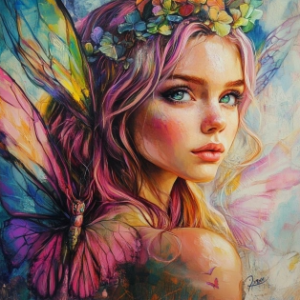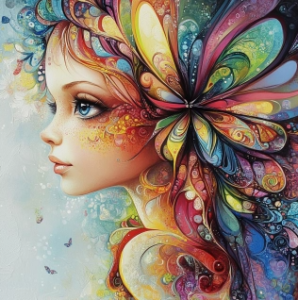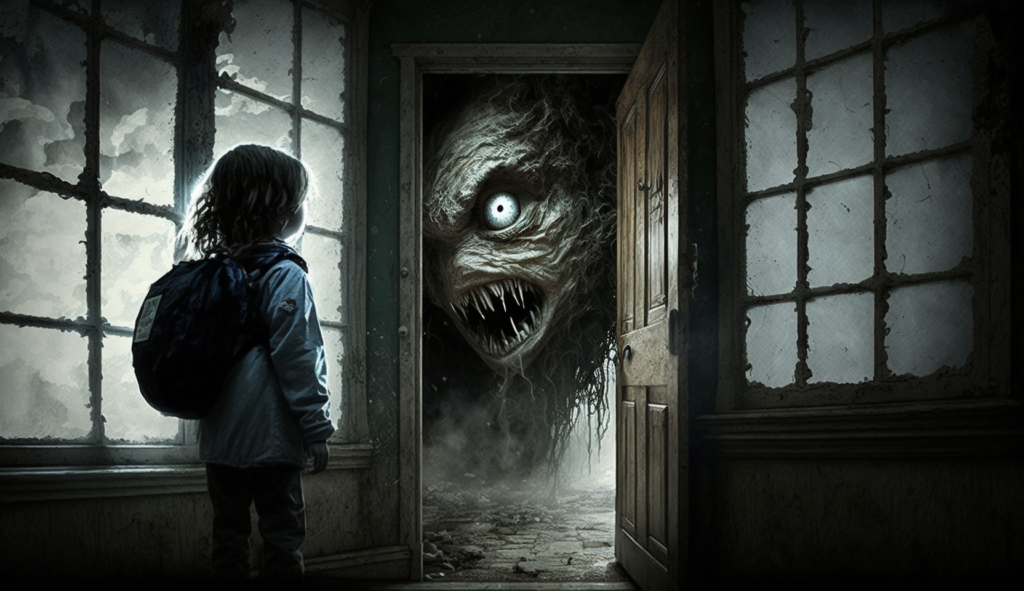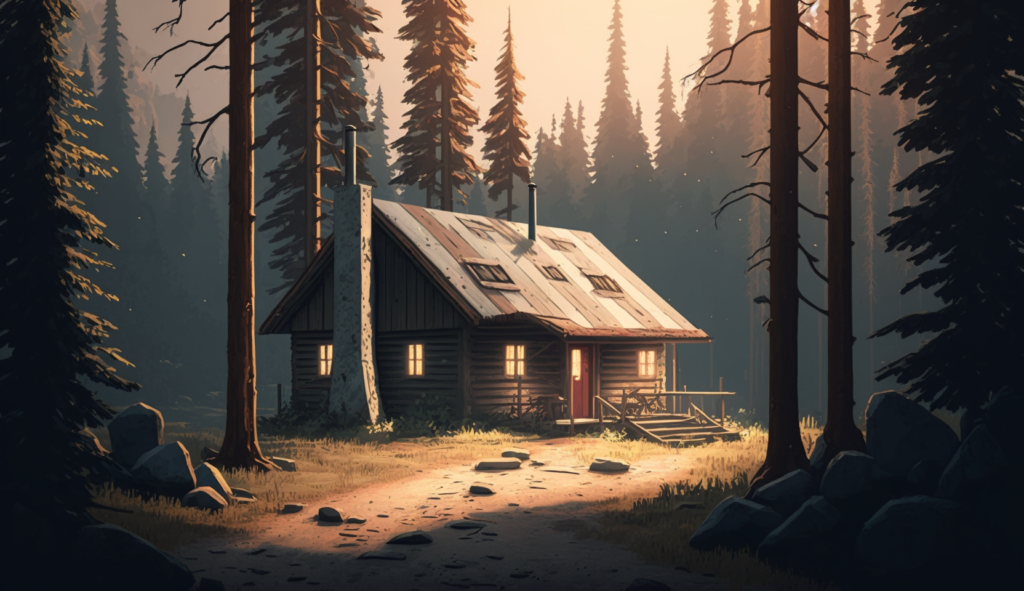In the flickering twilight, where shadows waltz with light, fairies flit like whispers through the foliage of our imaginations. These enchanting beings spin a tapestry of wonder across cultures and epochs, each thread woven with shimmering tales that captivate hearts and inspire dreams. Folklore serves as their enchanted mirror, reflecting humanity’s deepest yearnings and fears, reminding us of the magic entwined in life’s ebb and flow. From mischievous sprites

weaving mischief in moonlit glades to benevolent guardians tending to nature’s secrets, the allure of fairies beckons us into realms both familiar and unfathomable.
As we embark on this whimsical journey to uncover the origins of these ethereal figures, we unravel not just the gossamer strands of their mythology but also the profound cultural impacts they leave in their wake. Each fluttering wingstroke carries stories shaped by ancient beliefs—from Celtic lands where lush green hills cradle the Daoine Sídhe to tales whispered among expectant children under starry skies all over the world. Exploring fairy folklore reveals an intricate dance between imagination and reality—a reminder that even amidst modernity’s relentless pace, enchantment still thrives within our collective memory. So join us as we venture forth into enchanted realms explored—a world alive with secrets waiting to be discovered, where every page turned could hold a feast for both mind and spirit.
Ancient Mythologies: The Seeds of Enchantment
From the mist-veiled glens of ancient Ireland to the sun-kissed marble temples of Greece, the roots of fairy lore run deep into the tapestry of mythology. In these primordial tales, fairies sprouted not merely as whimsical sprites flitting through moonlit meadows, but complex beings—daughters of deities and messengers of fate. For instance, in Celtic mythology, the Tuatha Dé Danann were a divine race associated with nature and magic, often conflated with what we now recognize as fairies. Their story intertwines with that of the mortal world—an eternal dance between light and shadow where enchantments weave through reality like gossamer threads. Greek mythology resonates similarly; consider the nymphs—nature’s guardians who danced among trees and streams yet maintained an air of mystery that hinted at more than mere beauty.

The Norse sagas further embellish our understanding—the elusive Álfar (elves) inhabit realms both revered and feared. They possess a duality that reflects cultural beliefs surrounding fertility and fortune alongside danger and trickery. This delic
ate balance informs early perceptions of fairies as beings caught between reverence and apprehension, leading many to offer tributes or prayers for safety against their mischievous whims. Each region crafted its own unique vision—a blend shaped by geographical peculiarities and local customs—as stories traveled from village hearths whispered by haggard elders speaking to those keen enough to listen.
Religious tenets heavily colored this mystical realm; fairies evolved within a framework influenced by divine narratives or societal norms dictated by spirituality. Early Christians viewed them through a lens tainted by discord; once sacred spirits belonging to vibrant Earth worship grew cold under ecclesiastical scrutiny, becoming embodiments of temptation or misleading phantoms mustered from pagan folklore. Yet they persist! These transformed entities continue weaving through Western civilization’s collective imagination—unraveling myriad layers where light unfurls darkness in parallel destinies.
As we navigate these ancient mythologies today, each tale acts like a shimmering portal inviting us deeper into enchanted realms rich with history while simultaneously beckoning younger generations to linger there just long enough for wonder to blossom anew. Exploring these origins reveals not only tales spun gold from age-old yarns but also essential threads connecting us across cultures—a shared humanity entwined within tracks marked by footsteps echoing off forgotten faerie fields thriving in memory’s embrace.
Folklore Through the Ages
As the sun dipped below rolling hills, casting a warm golden hue over the countryside, whispers of ancient enchantments danced through the air. Folkloric tales brimming with fairies wove their way into the fabric of human experience, transforming simple narratives into intricate tapestries threaded with wonder and mystery. Over centuries, these stories evolved, adapting to societal influences and regional nuances, engendering a diverse array of fairy types—from Grootscholers in Dutch folklore who cunningly trick wise farmers to Benevolent Sprites lending aid to weary travelers in British lore. Each fairy embodied not merely magic but also reflected the hopes and fears birthed from cultural landscapes; they served as moral anchors shaping behavior or warnings shrouded in playful mischief.
Storytelling traditions emer

ged as vital vessels for preserving this enchanting heritage. Around flickering hearths or under starlit skies, elders spun their yarns—tales that fluttered like delicate moths around flames of curiosity. As tongues unfolded and emotions unraveled, each recounting was imbued with unique flourishes: perhaps an added twist that had morphed from previous tellings or a character inspired by an elderly neighbor’s irritable cat transformed into a magnificent Gnome of good fortune. These evolutions enriched folklore across generations until it became interwoven within daily life itself—a lingering memory resurfaced at family gatherings or celebrations marking seasonal rites.
Regional characteristics lent themselves generously to variations among fairy creations. In Japan, the elusive Yōkai, mischievous spirits often depicted with characteristics both comical and unsettling, contrasted sharply with Ireland’s ethereal Sidhe dwellers who guarded nature’s secrets wrapped in misty veils atop their enchanting hills. The German Unseelie sought revenge against those who wronged them while Scandinavian beings like Huldra donned seduction laced with danger beneath their bewitching beauty. Such distinctions not only define different cultures but send ripples across time; they elaborate upon shared themes yet embody uniquely resonant messages intended for distinct audiences cradled by craggy cliffs or serene shores alike.
Thus, as one explores these folkloric threads—from delightful whimsy to haunting truths—they reveal more than mere fables; they act as windows into worlds long forgotten yet pulsating with life. They bridge generations and beckon us closer to recognize our continuous interplay with nature and existence itself—a reminder that beyond every fairy tale lies an essential truth waiting just beneath layers of enchantment.
The Celtic Connection: Land of Fairies
In the lush green hills of Ireland, where the air is thick with whispers and the earth dances beneath ancient oaks, a vibrant tapestry of fairy beliefs weaves through the hearts and minds of its people. The Irish have long revered an enigmatic realm inhabited by the Daoine Sídhe, or “people of the mounds.” These ethereal beings are not merely figments of imagination; they embody a rich tradition that permeates storytelling, art, and everyday customs. Their beauty often belies their unpredictability—dainty as dew-kissed flowers yet fierce as winter storms. To encounter them is to step into a world brimming with possibility, where time slips through fingers like sand.
The concept of Daoine Sídhe has deep roots in Celtic mythology, intricately linked to the landscapes themselves. Believed to inhabit earthen mounds and dolmens scattered across Ireland, these fairies signifies an invisible boundary between our world and theirs. Tribes would often leave offerings at these fairy sites, believing their favor ensured good harvests and protection against misfortune. Even today, it’s common to see hedges adorned with bits of cloth or stones left by travelers seeking blessings or guidance from these unseen custodians. The lore surrounding them casts a spell over local cultures, infusing daily life with enchantment that breathes vitality into age-old traditions.
As modernity encroaches upon rural life, echoes of ancient beliefs continue to resonate through annual celebrations such as Bealtaine and Samhain—the turning points of the year adorned with firelight and joyous revelry that honor celestial cycles while invoking connection with those who came before. During Bealtaine festivities in early May, villagers dance around bonfires illuminating the night; enchanting tales are spun beneath star-studded skies as a homage to ancestral spirits and fae kin alike. Similarly, Samhain marks a magical threshold during which veils thin between worlds—a time when families light lanterns to guide their beloved dead homeward while warding off mischievous faeries who may slip into their midst unbidden.
Thus unfolds an enduring legacy woven from time itself—a shimmering reminder that in every flicker flaunting life amidst heather fields lie stories waiting to blossom after generations unravel their petals. Through understanding these age-old connections integral within Celtic culture, one discovers how even today’s festivities serve not only as remembrance but also renewal—keeping alive an ever-enigmatic bond shared between humanity and mysticism nestled deep in Ireland’s heartland.
Fairies in Literature: From Page to Pixie
From the quill of Shakespeare, whose verses danced with glimmers of enchantment in *A Midsummer Night’s Dream*, to the pages of modern fantasy sagas, fairies have tantalized readers across centuries. The ethereal Puck, mischievous and capricious, embodies the whimsical nature of these beings—nature’s playful sprites who manipulate reality while weaving the fabric of human affairs. In this vivid tapestry, we see how literature serves as a mirror reflecting society’s shifting perceptions of fairies: charming companions or malevolent tricksters, ever poised between mischief and wisdom, love and jealousy.
As writers spun their tales around fairy folk, they infused these characters with rich symbolism that transcended mere narrative. J.M. Barrie’s *Peter Pan* introduced us to Tinker Bell, a pixie whose light flickered like hope amidst trials—a testament to fidelity and sacrifice nestled within an enchanting veneer. Meanwhile, contemporary authors like Holly Black and Cassandra Clare have reimagined fairies through darker lenses; their fey are complex beings imbued with both grace and treachery—their allure wrapped in shadows rather than starlight. This evolution resonates deeply with our fascination for duality; it reveals our reverence toward the mystical while acknowledging our fears regarding what lies beyond our earthly grasp.
The ever-changing portrayal of fairies not only reshapes public perceptions but also invites adaptation into folklore itself. Each literary interpretation has inspired perhaps a thousand retellings whispered by firesides and threaded into animated adaptations; Disney’s colorful renditions merge innocence with fantastical delight yet occasionally gloss over deeper cultural meanings often sowed into fairy lore—such as cautionary tales hidden within familiar stories that challenge us to reflect on humanity’s own journey through folly and wisdom.
Through literature, fairies become immortally etched in our minds—a blend of fantasy woven tightly with reality which begs exploration far beyond enchanted glades and mystic woods. Perhaps the most potent magic lies not just in wings or wands but in words themselves—the ability to create worlds anew every time someone opens a book. Thus we embark not just on escapades but rediscover shades of ourselves mirrored through these enchanting creatures who continue gracing debates on love, identity, good versus evil—even as culture adaptively rewrites who they are—not simply as figures flitting behind curtains but echoes from realms where dreams converge with life itself.
Global Perspectives: Fairies Across Cultures
As we traverse the globe, it becomes clear that belief in enchanting beings reminiscent of fairies transcends continents and cultures, each imbued with its own rich symbolism. In Japan, the mischievous Yōkai dance through folklore as enigmatic spirits capable of both benevolence and chaos. With their whimsical charm, these creatures—like the playful kitsune with its fox-like grace or the unsettling Rokurokubi that transforms from human to monster—reflect a culture steeped in duality, where nature’s whimsy manifests through mythical avatars. Much like their Western counterparts, Yōkai serve as guardians of tradition while providing a canvas for moral reflection and caution against societal transgressions.
Turning our gaze toward Latin America, we encounter the Duende—a sprite shrouded in mystery who possesses an ineffable connection to creativity and inspiration. Often depicted as small yet spirited creatures living within landscapes or clay figurines, Duendes embody regional pride; they serve not only as representations of artistic vitality but also mirror local folklore’s melding of pre-Columbian beliefs with colonial influence. Though distinct from Western fairies draped in ethereal wings and light, Duendes evoke similar enchantment by inviting individuals into a dialogue of creativity and ancestral wisdom.
The stark contrast between Western fairy traditions—typically characterized by delicate wings and idyllic forests—and non-Western perceptions highlights the broader narratives surrounding these mythological entities. While European tales often underscore notions of beauty and harmony within nature’s realms, non-Western beliefs depict fairylike beings as complex reflections of human experiences—embodiments shaped by landscapes replete with danger or divine comedy. These differences resonate deeply within cultural ethos; where Western fairies beckon us into enchanted ballrooms adorned with twinkling lights, Yōkai play tricks on unwary travelers moonlit streets, urging them to embrace unpredictability.
Ultimately, these global perspectives don’t merely broaden our understanding; they enrich our experience of connecting with ancient stories that have traversed centuries. Through them lies a shared humanity—their complexities symbolize our dreams and fears alike while reminding us that magic knows no geographical bounds. Just as every story contains echoes of another, so too do these enchanting creatures invite us to delve deeper into our collective consciousness and cultural heritage—revealing connections that intertwine across seas like gossamer threads spun from starlight itself.
Modern Interpretations: Fairies Reimagined
In the kaleidoscopic landscape of modern media, fairies have shed their once quaint, ethereal cloaks to don a myriad of contemporary garbs. No longer confined to the whispers of ancient folklore, these whimsical beings now flutter through vibrant pages of bestsellers and shimmer across silver screens. Just take Disney’s reinterpretation of Tinker Bell; she has transformed from a mere supporting character in “Peter Pan” into a spirited heroine with her own series—resilient, adventurous, and independent. This evolution speaks volumes about society’s shifting views on femininity and agency, breathing new life into fairy mythos while sparking the imaginations of young audiences worldwide.
Books such as Holly Black’s “The Cruel Prince” delve into darker narratives where fairies possess both allure and danger—a stark contrast to their traditional portrayals as delicate creatures residing in sun-dappled glades. Here we wander through realms imbued with treachery and intrigue as characters navigate politics among the fey courts. Such interpretations invite readers to explore moral complexities that transcend ancient labels of ‘good’ or ‘evil’, allowing personal interpretative freedom that resonates powerfully with young adults navigating their own labyrinthine lives.
Artistic expressions also play a significant role in reshaping how we perceive these mystical creatures today. The rise of platforms like Instagram allows artists to push boundaries—fairies adorned in tattoos or grunge fashion stare back from screens, captivating an audience eager for inclusivity and diversity beyond age-old conventions. Far from being mere subjects in fantasy genres, these creations urge us to rethink identity while peeling layers off age-old tropes about beauty surrounding fairylore.
Ultimately, it is this intimate connection between modern storytelling and self-identity that defines today’s fairy-related narratives. Young adults often find themselves magnetically drawn to tales that mirror their aspirations for empowerment or reflect socio-political themes they passionately endorse; they relate viscerally to characters who – much like them – grapple with fractures in loyalty or fight against societal expectations. In rediscovering the enchantment within themselves through these reimagined tales, we glimpse how modern interpretations not only preserve but actively revive the magical tapestry woven by cultural heritage while fostering individuality among new generations.
Scientific Perspectives: Debunking Myths or Discovering Truths?
In the tapestry of human history, the shimmering threads of belief in fairies have stretched across cultures and epochs like luminous constellations illuminating a night sky. Anthropologists delve into these beliefs as artifacts of collective consciousness, revealing that fairy lore often served as a window into the societal norms and values of the time. For instance, tales of mischievous fae may have once explained misfortunes or inexplicable occurrences—an attempt to make sense of the chaos within everyday life. The anthropological lens presents fairies not merely as figments of fantasy but rather intriguing reflections of humanity’s deep-rooted quest for understanding in an often bewildering world.
When we shift our focus from overarching anthropology to exploring individual experiences, psychology introduces another captivating dimension. People have long claimed encounters with enchanting beings, invoking vivid images that can be traced back to altered states of consciousness. Research suggests that certain psychological phenomena—including sleep paralysis or hallucinations—might weave together real moments that feel otherworldly yet emerge from biological processes. A person who awakens during a tumultuous dream might find themselves convinced they’ve been visited by ethereal creatures, blurring the boundaries between reality and imagination. In this sense, such phenomena raise beguiling questions: are these sightings mere sensory tricks played upon us by our minds? Or do they indeed touch upon something genuinely mysterious?
Yet science’s relentless inquiry can act both as a bridge and barrier. While it debunks some aspects of folkloric accounts—shattering preconceptions with rational explanations—it also opens avenues for deeper exploration into cultural symbolism and collective imaginations that persist around fairy lore worldwide. Some researchers propose that myths arise from kernels of truth; for example, widespread reports of “little people” could allude to historical encounters with bygone civilizations or different cultures misinterpreted through misunderstanding—a dance between folklore and reality extending over centuries.
Ultimately, the debate remains candidly layered; while empirical evidence serves invaluable in demystifying many narratives surrounding fairies, it does not wholly dismiss their enchantment nor significance in cultural identity. Perhaps instead of painting folklore strictly in hues defined by science or skepticism alone, we should embrace its whimsical complexity—a beautiful kaleidoscope reflecting our desires to dream beyond tomorrow’s horizon while exploring life’s enigmatic currents today.
Preserving Fairy Lore for Future Generations
In a world increasingly dominated by technological advances and globalized culture, the delicate threads of folklore risk fraying into obscurity. Yet amid the relentless march of modernity, there exists a vibrant pulse of communities dedicated to safeguarding these enchanting narratives. Each fairy tale embodies the spirit of its people—wisdom passed down through generations illuminates cultural values and social mores. Consciously weaving their stories into contemporary fabric is imperative for preserving this rich heritage, ensuring that future generations can revel in the delightful charm of fairies without succumbing to uniformity.
Various initiatives spring forth with renewed vigor, intent on promoting educational programs centered around local mythical traditions. Schools often participate in workshops where students engage with folk tales while creating artwork inspired by ethereal beings—like crafting dioramas of shimmering fairy glens or storytelling sessions under willow trees. Libraries organize reading circles where timeless tales take flight, introducing young minds to characters like Puck or Tinkerbell who frolic through realms unexplored. These endeavors foster an appreciation for local folklore and nurture creativity while grounding children in their own cultural identity.
Communities gather as well, bringing fairy lore to life through vibrant festivals steeped in magic and joy. In Ireland’s enchanted landscapes, the annual “Fairy Fort Festival” lures thousands, transforming hillsides dotted with ancient earthworks into bustling realms of whimsical celebration; dancers twirl beneath rainbows as storytellers mingle within circles, sharing narratives both long-lost and newly crafted. Similarly, events like Canada’s “Fairy Tale Parade” see neighborhoods transformed into living storybooks where families don costumes inspired by beloved figures—a delightful tapestry woven from shared history and imagination. Such gatherings strengthen bonds between residents while igniting passion for their local myths.
As we traverse this delicate balance between preservation and progress, it becomes clear that community-driven efforts to keep fairy lore alive breathe new life into generations yet unborn. In every whispered story nestled against a sleeping child’s ear or fantastical performance illuminating starry skies at twilight, enchantment blossoms anew- reminding us all that beside the veil of reality lies a doorway beckoning us back to our wild imaginings—a legacy worth celebrating amidst the cacophony of modern existence.
Discovering the Threads of Enchantment
As our whimsical journey through the enchanted realms of fairies draws to a close, we find ourselves with a treasure trove of insights sparkling in our hearts. From the verdant hills of Celtic heritage to the shadowy corners of global mythologies, the diverse origins of these ethereal beings weave an intricate tapestry that connects cultures across time and space. We’ve traversed ancient myths and modern interpretations alike, discovering how each tradition carries its unique essence while echoing shared human experiences—our dreams, fears, and wonder at the inexplicable magic woven into life.
Now, dear reader, dare to delve into your own cultural roots; seek out those hidden gems—the magical tales whispered by elders around crackling fires or tucked within the pages of forgotten books. Embrace this enchanting exploration! For in understanding fairy origins and their manifold representations, we unwrap profound narratives that enrich not just our imaginations but also foster a deeper appreciation for the vibrant folklore traditions that enrich our world. Let us tread barefoot upon this textured ground where history meets fantasy, embracing every flicker of whimsy and reveling in the rich legacy they’ve gifted humanity.

